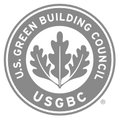Kristof Irwin of Positive Energy recently hosted our friend Lucas Johnson of 475 Building Supply on his podcast for a fascinating discussion around sustainable building.
The specific topic is the impact that insulation has on a building’s carbon footprint…. something we care about quite a bit. Whether you’re a building scientist or curious homeowner you’ll find Lucas and Kristof’s passionate perspective for sustainable building appealing.
Operational vs Embodied Carbon
It starts with a crucial explanation of operational carbon vs embodied carbon and why it’s so important to distinguish between the two. The operational carbon of a building really refers to energy savings, i.e. how much or how little carbon dioxide a building creates. Embodied carbon is the carbon dioxide emitted during the lifecycle of building materials. Crucially, operation carbon is THEORETICAL as energy usage of a building can fluctuate but embodied carbon is more certain. By no means should we minimize energy savings (operational carbon) but we need to look at a building holistically and incorporate it’s embodied carbon footprint as well. It is certainly possible to have an efficient building that is built inefficiently!
Insulation Matters
And where does insulation fit into this? As Lucas points out, insulation materials have a massive impact on both operational and embodied carbon footprint given the sheer amount in use. The most dramatic shift in a building’s carbon footprint can be achieved just by switching out the insulation chosen. A great example cited is a 1500 s/f home with an estimated 70,000lb upfront carbon impact when built with spray foam and XPS foam board. Switch that with wood and wool insulation and the carbon impact goes to -30,000lb. A 100,000lb delta just by changing insulation! The icing on the cake is that the insulation will perform better (operational carbon) with a negligible increase in upfront cost. Win-Win-Win.
Looking Forward
One final point we’d like to add. It’s easy to sound moralistic when promoting healthy building but Lucas and Kristof do an excellent job of avoiding that. Their conversation clearly and logically lays out the rationale for building properly without caustic judgment of the alternative. Indeed, they reference past experiences of using “less than sustainable” materials. This is a crucial component of the conversation. No one has a perfect track record when it comes to building material choices. (Note this also applies to our everyday consumer decisions!) but what matters most is what we do now and in the future. There are alternatives out there for us to choose from … whether it’s replacing spray foam insulation with wool … or eschewing bottled water for a refill of your thermos. Take the time to become informed and make better decisions. Fortunately, we have folks like Lucas and Kristof to help us with that. Take a listen to their conversation HERE.





